We think of Earth as a kind of life harboring spaceship catapulting through the cosmos. However, not all of the earth is livable, and some places are naturally hostile toward anything but the most basic of life forms. What are 10 of the most uninhabitable places on earth?
10. Bonneville Salt Flats in Utah
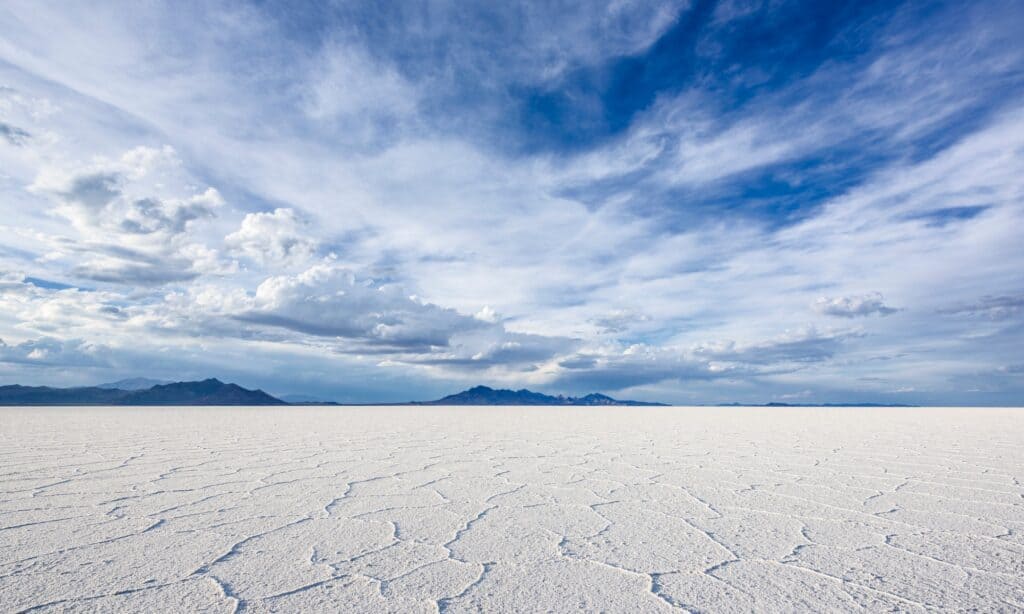
The Bonneville salt flats are part of a lifeless playa in Utah.
©iStock.com/ablokhin
The Bonneville salt flats in Utah are a saline playa. A playa is a parched, plant-free part of a desert basin with no continual water sources. Water pools in the rainy season and evaporates. This leaves behind its characteristic salt.
There are thriving bacterial communities in the top layers of the salt flats, so it’s not completely uninhabitable. One example is cyanobacteria, capable of using a sulfide to make up for its lack of photosynthesis.
Most cyanobacteria rely on photosynthesis to survive, but this one uses some of the salt that makes up the crust of the Bonneville salt flats instead. This specific salt is called gypsum salt, and it varies from table salt because it contains sulfur instead of sodium.
9. Chornobyl in Ukraine
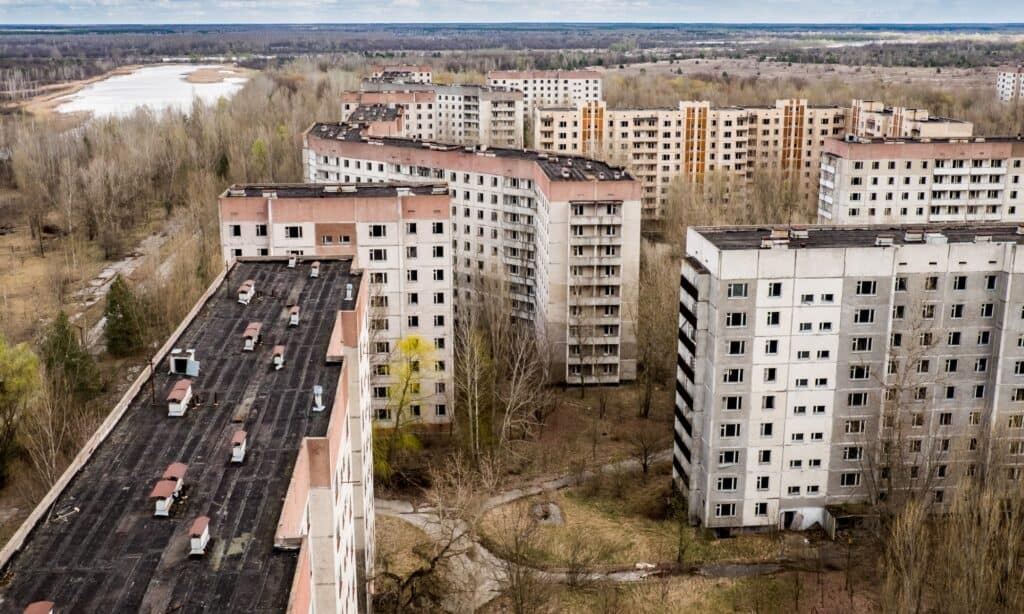
Chornobyl was so disastrous that the town was evacuated, and no one has returned.
©iStock.com/Tijuana2014
Sometimes humans are to blame for making parts of the earth inhospitable.
A deadly radiation blast occurred when the Chornobyl (also spelled Chernobyl) powerplant melted down on April 26th, 1988. To this day, if you get close to the melted reactor, you’ll die. There are zones around the area that allow for limited human use, but there are no regular employees or inhabitants of the area because it’s still too dangerous.
A study using rodents shows that radionuclides were taken up by abiotic sources. This means that exposure to deadly radiation occurs outside of ingestion and happens when one comes in contact with water, minerals, soil, and air from the site.
Chornobyl has stood empty since the meltdown. It was evacuated so quickly that haunting pictures have been taken of abandoned human activities that remain rotting to this day. Tables are still set, and newspapers are still spread on tables because it’s now a ghost town.
8. Siberia in Russia
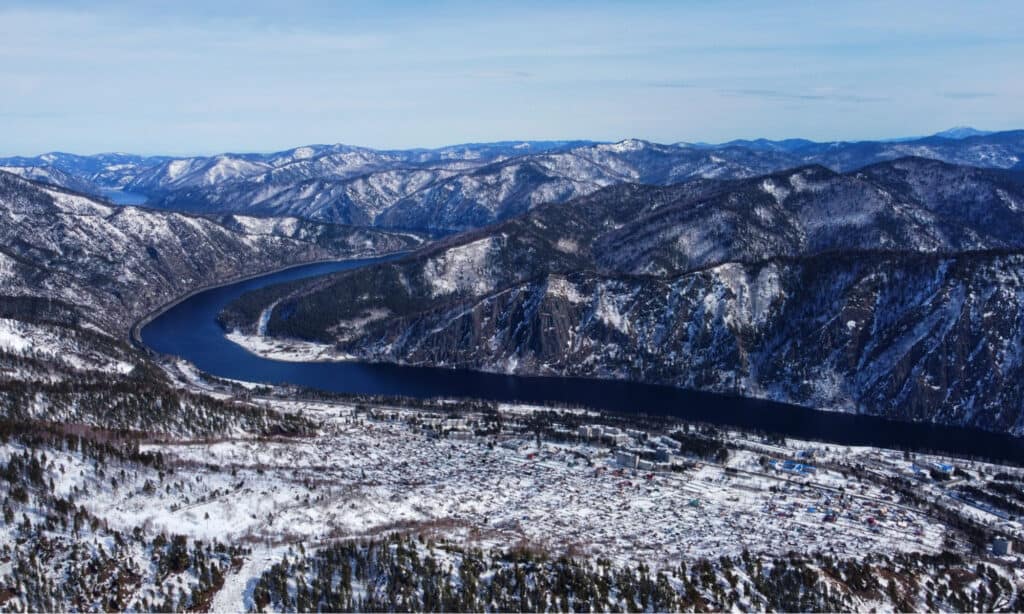
Siberia is one of the most inhospitable places to live on the planet.
©KissCat/Shutterstock.com
The average temperature yearly in Russia’s Siberia is about 23 degrees Fahrenheit. It plays host to some of the lowest temperatures recorded outside of Antarctica, at -94 degrees.
While some do manage to exist in Siberia, it is one of the most inhospitable places on the planet. It takes up 77% of the country of Russia, yet it’s one of the least populated regions of the globe.
7. Snake Island in Brazil
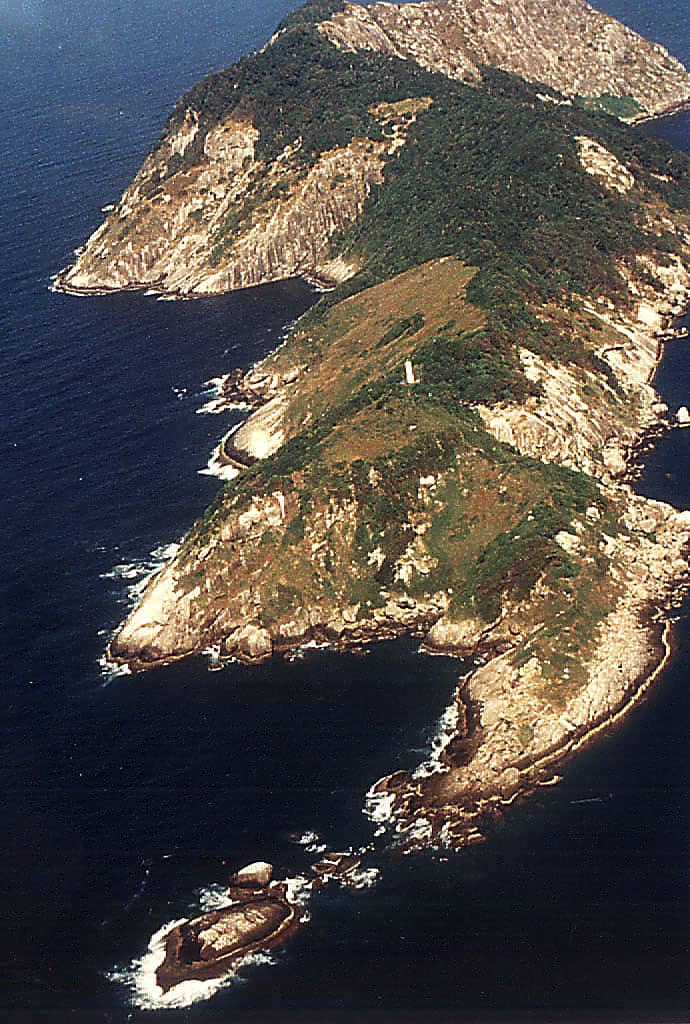
The endemic golden lancehead viper on Snake Island is prized in the illegal pet trade.
©Prefeitura Municipal de Itanhaém / Creative Commons – License
Snake Island is overrun with venomous snakes. It’s off the coast of Brazil with an official name of Ilha Queimada Grande. The island is 20 miles from the Brazilian coast, which keeps these snakes contained and keeps them from reaching South America.
The golden lancehead viper is endemic to this island. Because it’s so rare and hard to obtain, it is a prized snake that people risk their lives trying to obtain.
6. Marianas Trench in the Pacific Ocean
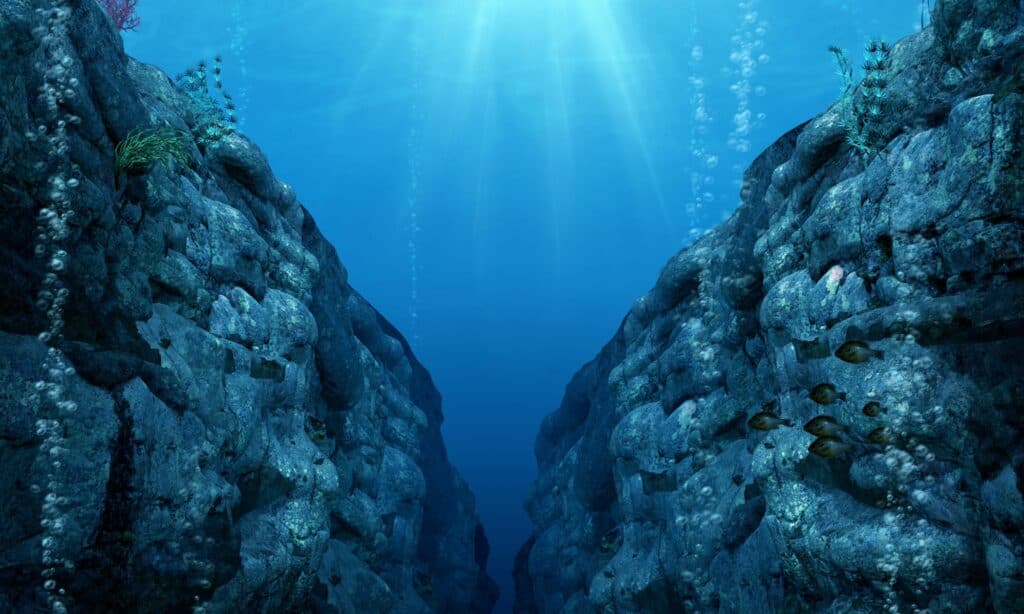
Some microbes survive almost 7 miles deep in the Pacific Ocean.
©iStock.com/ratpack223
The Marianas Trench is almost 7 miles deep at its deepest point. Over 1,000 times the water pressure at the surface exists in this trench because the water column above it pushes down so much. Special groupings of single-celled organisms called Monothalamea survive these depths.
Even though it’s incredibly deep, there are microbes as well as the aforementioned that exist in the trench. Humans have made it to the bottom, and it’s been suggested that the site be used to dispose of nuclear waste. There are a variety of reasons why that is a bad idea.
5. The Peak of Mount Everest on the border of China and Nepal
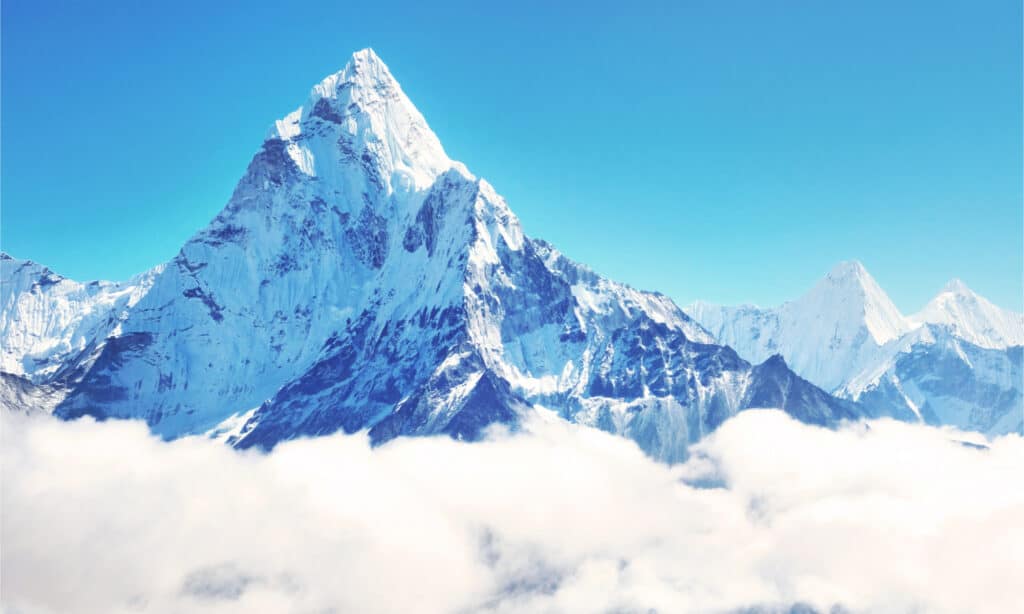
The death zone near Everest’s peak cannot be traversed without an oxygen tank.
©Vixit/Shutterstock.com
The highest point on Mount Everest is almost 30,000 feet, which makes it the tallest mountain on earth.
It’s so deadly to climb up Mount Everest that the last part of the expedition to the peak is called the “death zone.” If your oxygen tank runs out in this death zone, you’ll die from lack of air since the air pressure at this elevation is only 1/3rd of what it is at sea level.
In the death zone, many people have died, but the extreme conditions don’t allow for body recovery. There are corpses more than 100 years old along the trail to the peak. There’s no way to rescue a hiker by helicopter after they’re more than halfway up Everest.
4. Lake Natron in Tanzania
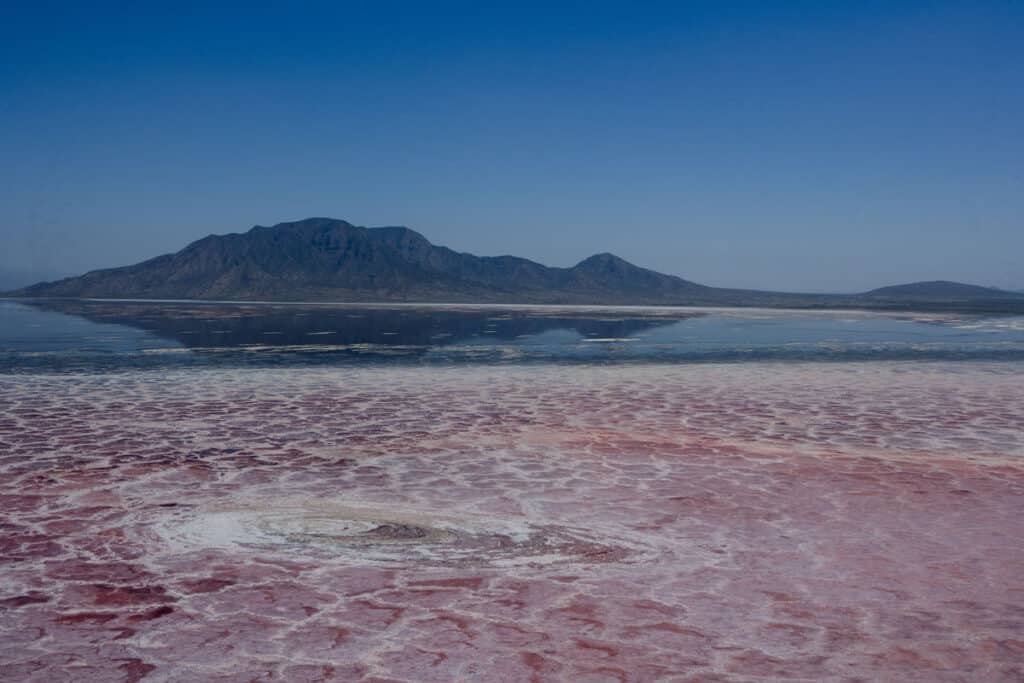
Only flamingoes can touch the waters of Lake Natron.
©iStock.com/Mario Faubert
The water in this lake is red, and it calcifies anything but flamingoes that touch it. The water temperature goes up to 140 degrees Fahrenheit.
Lake Natron is extremely alkaline, with a pH of almost 12, since the water quickly evaporates. The red color comes from cyanobacteria that flourish in the water.
3. The Atacama Desert in Chile

The Atacama Desert is 50 times drier than Death Valley in California.
©iStock.com/Eduardo Cabanas
The Atacama Desert is one of the driest spots on earth, with rain only falling a few times every 40 years. It is 50 times drier than Death Valley in California, and it went over 500 years without a drop of precipitation.
The specific weather patterns in the area, ocean currents, and the positioning of the mountains help create this barren desert.
In 2015, it rained for the first time in 500 years in the core of the desert. Instead of this causing a flourishment of life, it killed most of the microbe population in the area. These microbes are so adapted to arid environments that they exploded when confronted with water.
2. The Danakil Depression in Ethiopia
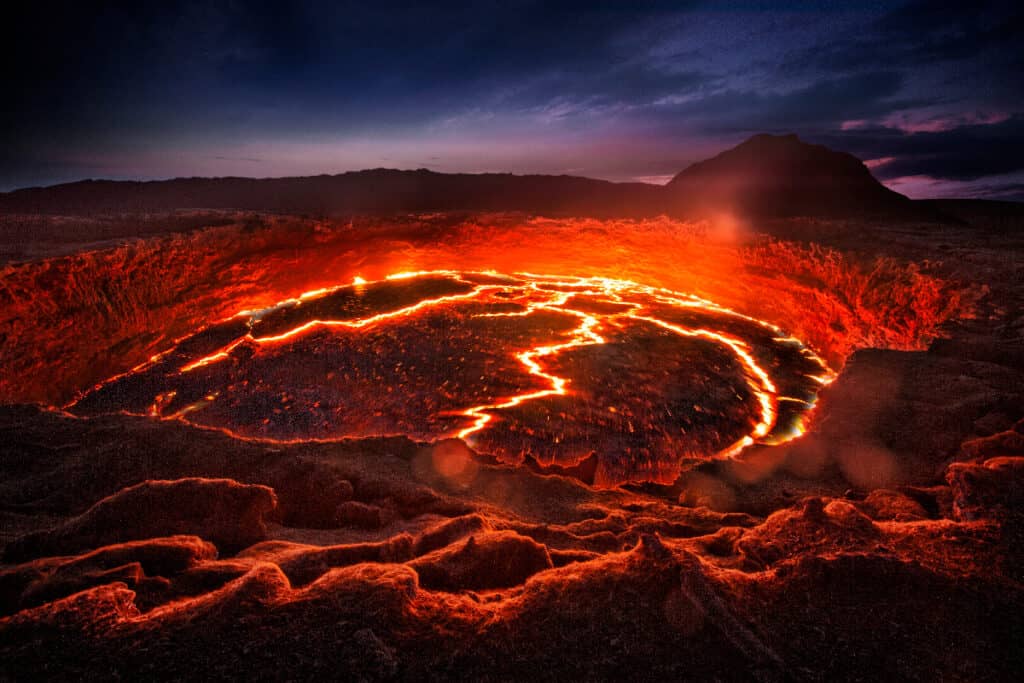
Volcanoes in the Danakil Depression support absolutely zero life.
©/Shutterstock.com
This area of the globe looks more like Mars than it does our planet. Its landscape is orange and yellow, which is caused by burning salt and sulfuric acid within the Dallol geothermal field within the depression. While some microbial life exists in other parts of this desert, the geothermal pools of boiling liquids support absolutely nothing.
Located in northeastern Ethiopia, the Danakil Depression is often above 122 degrees. There are a few volcanoes within this depression and one, in particular, has emissions that aren’t just toxic; they go against everything we know about sustaining life.
Even these hydrothermal vents, which in other parts of the world have their unique ecosystems, contain absolutely no organisms or traces that organisms have ever lived there. Most geothermal environments support at least some kind of single-celled organism, but there is absolutely nothing present.
1. Most of Antarctica
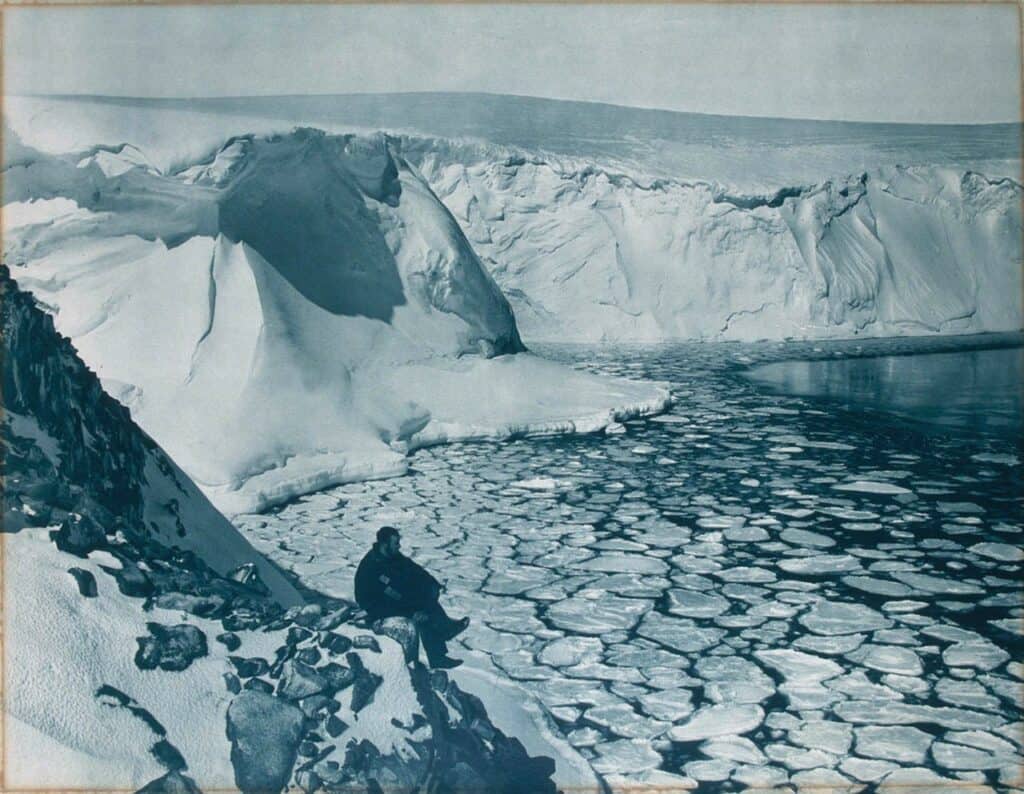
While humans have outposts on Antarctica, almost all of the continent is uninhabitable.
While there are a handful of human camps and tourists venture down to the continent during summer, most of Antarctica is uninhabitable. Even the human outposts that exist are barely livable.
There is a place in Antarctica called the Drys Valley that hasn’t experienced rain for over 2 million years. These high-altitude valleys have such dry air that precipitation never falls.
Commonwealth Bay on the continent has periods of sustained winds of 150 mph during the winter. Even the average winds are over 50 mph, and, of course, it’s always well below freezing.
The photo featured at the top of this post is © iStock.com/ablokhin
Thank you for reading! Have some feedback for us? Contact the AZ Animals editorial team.






